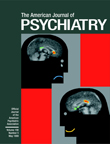The editors are to be congratulated for successfully bringing together 66 authors from 20 of the United States as well as from Mexico, Spain, and Canada to produce this scholarly and readable textbook. This book ought to be required reading for every health care provider and educator for populations under the age of 21. Divided into four deceptively arcane and broad-sounding sections (Foundations and Current Issues, Neuropsychological Diagnosis, Techniques of Intervention, and Special Topics in Clinical Child Neuropsychology), the book contains clinical nuggets that can profoundly influence the way we approach each child.
I was a bit embarrassed to learn, for the first time, that the brain, which constitutes only about 3% of our total body weight, can consume 70% to 80% of our oxygen and glucose. Much more humbling was the realization of how versatile and prudent the developing brain is in playing gardener as it prunes and selectively allows certain parts of the nervous system to flourish while forcing others to play bonsai tree roles. The authors of chapter 4 (“Higher Brain Functions in Children”) put it very succinctly when they say, “Phylogenetically, the brain can be thought of as a blueprint of nature’s original design in which we currently lack the original complete set of plans. To understand the brain’s architectural plan today is like looking in a house in which additions have been made but without having access to the original plans to guide us.”
Think for a moment of the six major events that occur in normal brain development (dorsal induction, ventral induction, neuronal proliferation, neuronal migration, neural cell assembly organization, and myelinization). Any disruption of these processes can produce maturational dysfunction, which explains why the incidence of all major central nervous system anomalies diagnosed at or after birth is approximately 33%. Add to that the numbing number of known causes of such disruptions (coffee, lack of folic acid, alcohol, smoking, and influenza, to name a few), and the idea of producing children is daunting. We read in this particular chapter that premature infants who weigh less than 5.5 lb are at far greater risk for birth-related defects, infant mortality, and developmental abnormalities of the brain, accounting for 30%–40% of deaths during the first 12 months of life. In addition, low-birth-weight children have significantly higher rates of white matter abnormalities such as perinatal leukoencephalopathies, and cerebral palsy is 30 times greater in infants weighing less than 53 ounces at birth. Low-birth-weight children can also develop bronchopulmonary dysplasia leading to neurological and cognitive impairment.
I found the chapters on neuropsychological testing and neuroimaging especially useful. Colleagues in a university setting cannot possibly comprehend how intimidating it is to be in private practice and feel so far removed from the cutting edge of new technology and academic thinking trends. This section is very easy to grasp and makes the remote and the intimidating accessible and intimate. It helped me maintain a more intelligent dialogue with colleagues, including psychologists, classroom teachers, and radiology professionals.
I found the book’s treatment of learning disabilities, especially the treatise on nonverbal learning disabilities, particularly timely because I was dealing with two youngsters who had nonverbal learning disabilities. While I was finishing the chapter on epilepsy and brain injury, I encountered new patients who had those problems.
I thought I knew a lot about methylphenidate because of the research I did with Jan Loney at the University of Iowa and because I use it so often in my practice, but I learned a lot more from the chapter on medications in this book. Reading this book was like accessing a Web page of each of the topics listed and downloading answers to my questions each time one arose. It is worth its weight in malpractice prevention gold.

